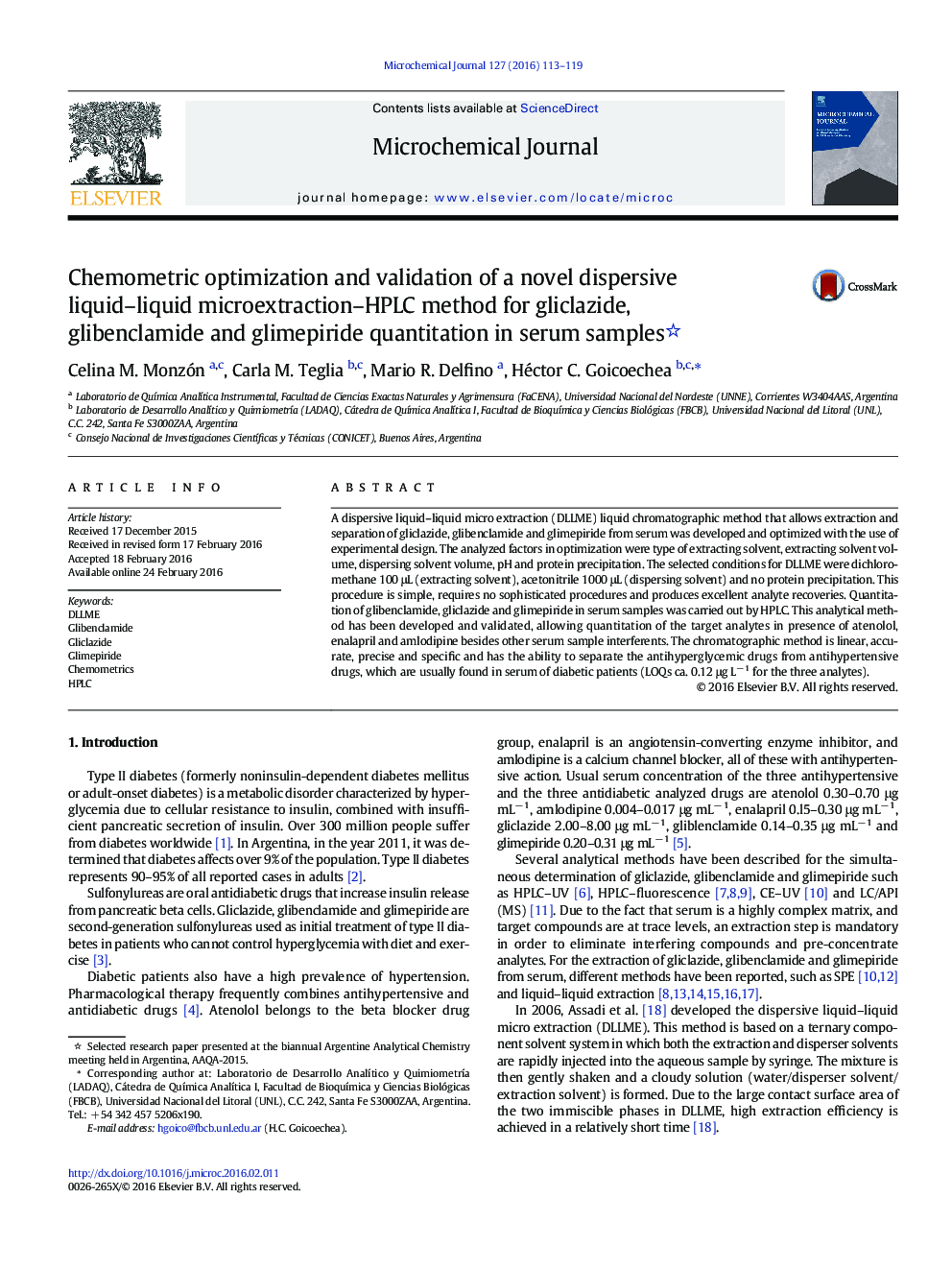| Article ID | Journal | Published Year | Pages | File Type |
|---|---|---|---|---|
| 1227507 | Microchemical Journal | 2016 | 7 Pages |
•In this study we show that iPS derived cardiomyocytes (iPS-CMs) express cardiac specific markers, e.g. MHC and cTnT, and importantly express membrane connexin-43, a key gap junction protein that is responsible for synchronous communication between cardiac cells.•Further investigations demonstrated that these iPS-CMs display cardiac electrophysiological activity verified by patch-clamp in single contracting cells, and optical mapping with RH237, a voltage-sensitive dye, in iPS-CM clusters.•These results indicate that iPS cells might be a promising cell source for the generation of patient-specific cardiomyocytes even for patients with severe heart disease, because the cells can be made available in unlimited amounts and are capable of cardiomyocyte generation.
A dispersive liquid–liquid micro extraction (DLLME) liquid chromatographic method that allows extraction and separation of gliclazide, glibenclamide and glimepiride from serum was developed and optimized with the use of experimental design. The analyzed factors in optimization were type of extracting solvent, extracting solvent volume, dispersing solvent volume, pH and protein precipitation. The selected conditions for DLLME were dichloromethane 100 μL (extracting solvent), acetonitrile 1000 μL (dispersing solvent) and no protein precipitation. This procedure is simple, requires no sophisticated procedures and produces excellent analyte recoveries. Quantitation of glibenclamide, gliclazide and glimepiride in serum samples was carried out by HPLC. This analytical method has been developed and validated, allowing quantitation of the target analytes in presence of atenolol, enalapril and amlodipine besides other serum sample interferents. The chromatographic method is linear, accurate, precise and specific and has the ability to separate the antihyperglycemic drugs from antihypertensive drugs, which are usually found in serum of diabetic patients (LOQs ca. 0.12 μg L− 1 for the three analytes).
